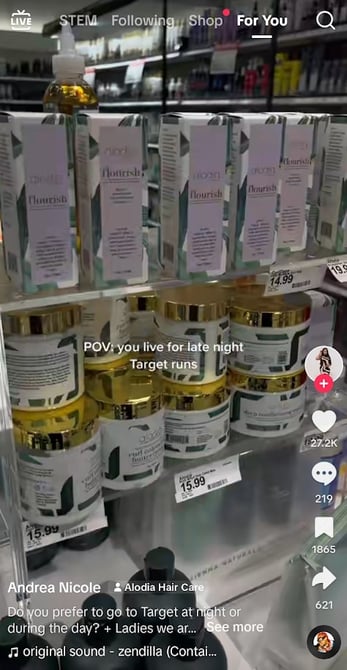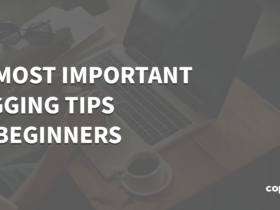Hot take: more brands should send retail influencers to promote products in-store.
And sure, retail activations are a big to-do without a platform to coordinate them.
But the benefits are massive for brands that pull them off consistently:
- More authentic content to promote organically or via UGC ads
- Aligning your social media efforts with your retail campaigns
- Assets to share with channel partners to prove you’re proactive about sell-through


If in-store activations are on your radar, you’re (literally) in good company. We’ve seen a 150% lift in retail influencer campaigns with our platform.
What do influencer activations look like though? What makes “good” in-store content?
These retail influencer marketing examples and tips dig into these questions and more!
Examples of Retail Activations with In-Store Influencers
The recent retail influencer boom is a reminder that you shouldn’t limit your influencer strategy to ecommerce.
Especially if your brand is currently featured in major retailers (or is about to be).
Consider also how more and more in-store promotions include creators and UGC. The rise in retail brands driving in-store content with our software is telling, too.
Let’s look at some examples of retail activations with influencers done right. We’ll focus on two of the biggest verticals where in-store content shines: beauty and food.
Examples of Beauty Retail Content Done Right
It’s no secret that beauty brands are at the forefront of most influencer promotions.
And that includes consistent retail activations to stay on beauty buyers’ radars.
Because shelf space is limited and competition is fierce.
The challenge? Different types of beauty products drive demand at different stores. From Ulta and Sephora to Target and CVS, in-store beauty content is anything but one-size-fits-all.
However, influencer activations with haul videos are fair game for any product.
The concept is simple: send creators in-store to show off your latest launches in person.
Haul videos are the bread and butter of beauty brands already. The popularity of #ComeShoppingWithMe content (hint: 700+ million views on TikTok) highlights how shoppers love to virtually tag along with creators and learn about new cosmetics.
This post for an influencer activation for Alodia Beauty highlights how something as simple as a Target run can result in engaging in-store beauty content.


Source
Note that this creator matched with the brand via Statusphere’s influencer matchmaking platform. Earning 27,000+ Likes and 1,800 Saves with <6,000 followers, this is a reminder that “smaller” creators can build big awareness for retail brands.
Beyond high engagement, here’s why this is an example of in-store content done right:
- The creator shows viewers exactly where the product is located in-store. This seamlessly encourages shoppers to swing by the beauty aisle during their next Target run.
- The brand’s products are featured prominently throughout the post. Viewers can see product packaging clearly on the retail display and up close in the hands of the creator. The creator also shouts out her favorite product in her caption, noting how the brand is part of her personal routine. That’s social proof!
- The creator tells a story. Taking viewers on a Target run is relatable to the creator’s audience as confirmed by the post’s 200+ positive comments. The POV narrative serves as a simple but effective way to engage social shoppers.

Source
Another trademark of in-store beauty activations is picking up products in-store and then demoing them at home. This is a prime way to show how a product can fit into someone’s skincare routine. The post below for Yuni Beauty is a great example.


Source
Note how the creator prominently shows off the product packaging from multiple angles in-store. The subtitle featuring the brand’s name is a smart touch to keep the brand top-of-mind for viewers who may have not tried them out yet. Finally, showing viewers how to use the scrub at home makes the video more relatable and makes the product more “real.”
Why Micro-Influencers Activations Are Brilliant for Retail Beauty Brands
Both of these in-store activations highlight the value of powering your retail campaigns with micro-influencers.
Doing so means you can generate authentic content at scale while also earning word-of-mouth.
That’s because micro-influencers are typically very engaged with their audiences. They’ll consistently answer questions, provide feedback and recommend products to commenters. This does double duty of building social proof and driving the interactions that social algorithms want to see.

Consider also that shoppers might be hesitant to try new cosmetics without reviews or “official” star ratings. Authentic influencer content and comments provide much-needed social proof to make shoppers confident enough to purchase something new.
That’s part of why micro-influencer activations are particularly powerful for beauty product launches. Not to mention that the more influencers you send in-store, the wider range of products and audiences you can promote during a single campaign.
Think about it: it’s much easier to show off variants and complementary products when you have 100+ creators promoting your launch versus a handful.
Examples of Food and Beverage Retail Content Done Right
In our experience, food and beverage brands are among the biggest winners with retail influencers.
Grocery products lend themselves to in-store activations for a few key reasons:
- Convenience for creators and shoppers alike. For example, a creator who’s already out grocery shopping at can film their content without a separate commute. On the flip side, in-store content by default plants the seeds for shoppers to pick up a product during their next grocery store trip.
- Marketing food products means bringing them to life. Note that content formats like time-lapse recipes or “What I Eat in a Day” videos are all the rage on TikTok. These types of posts are poised to drive more engagement and enthusiasm from social shoppers than static product shots.
- Creative freedom and content variety. If you provide 50 creators the same instructions to buy a product in-store and make a recipe with that product at home, you’ll get 50 totally unique pieces of content. Every in-store commute looks different, as does every creator’s kitchen and final dish.
Having a wide variety of content is a key piece of UGC advertising. The more in-store content you generate, the more you understand what performs best. You also learn what has potential as an influencer ad on Instagram or TikTok.
We’ve found that oftentimes the videos that do well are the ones you’d least expect. Check out this recipe video for Kosterina’s in-store activation which managed to turn some heads.


Source
No matter how you feel about the idea of olive oil ice cream, this is the exact type of post that’s tailor-made for Instagram and TikTok. Here’s a few things that this influencer activation did right:
- The influencer was able to flex their creative muscles. The video’s short-form, trendy recipe format with quick edits was prime for engagement. 1,600+ Shares is a lot for a video like this, especially relative to its Like count. This example highlights how creators stay on top of trends, resulting in more engaging content for retail brands.
- The creator shows off the product packaging and brand while also providing a call to action. Accomplishing all of the above in a video that’s only a few seconds can be done when influencers are allowed to balance creativity with brand direction.
- The video illustrates the value of raw content. You never know which types of videos are going to really click with people. We always advise brands to trust creators’ judgment and be wary of overly polished posts and lengthy creative briefs. Let creators cook!
Again, one of the biggest benefits of working with a high volume of smaller creators is content variety. Chances are you’ll get a mix of more “traditional” influencer content (see below) alongside a few pieces that take some creative liberties. That’s totally okay!

Source
Beyond creative content, keep in mind that in-store activations are sometimes a necessity for food brands that want to work with influencers at all. Case in point: frozen food items where fulfillment would be too complicated, costly or downright impossible.
This was the case for Afia Foods who used Statusphere’s platform to promote their frozen Meditterian cuisine with recipe content. Their retail influencer marketing campaign in stores including Sprouts and Whole Foods resulted in:
- 150+ pieces of unique, rights-ready content
- Over one million views across TikTok and Instagram
- 350 hours of manual campaign management saved


Source
Read the brand’s full story and learn about how Statusphere supports retail launches here.
5 Best Practices of Influencer Marketing Campaigns for Retail Brands
To wrap things up, let’s recap key considerations for brands using creators in retail activations.
- Show products off in their “natural habitat.” Buying products in-store and showing them in use at home helps viewers experience the product for themselves. Simple as!
- Let creators highlight how your product works for them. This makes it easier for shoppers to imagine how your products might benefit them and fit into their daily routines.
- Prioritize creators that match your audience and fit your target retail markets. Influencer geotargeting can uncover creators to generate in-store content at specific store locations. Granted that’s your goal.
- Offer creative directions, not demands! Inspiring influencers as a brand is fair game but art-directing them isn’t. Nitpicking creators not only prevents you from earning content at scale but also limits their creativity. In our experience coordinating over 75K creator collabs, raw content performs because it’s unfiltered. The more your posts look like organic user-generated content, the better.
- Build influencer activations into your product launch timeline. Consider that creators can provide awareness both before, during and after your launch. For example, content from a launch campaign next week can serve as the basis for allowlisting ads three months from now. Thing is, you have to account for tasks like fulfillment and briefing creators are a time-sink when working with more than a handful of creators.
Pssst! We recently wrote an e-book all about promoting retail product launches with influencers. Check it out for even more insight into why more brands are requesting in-store activations.
How to Get More Influencers Promoting Your Retail Presence
Retail support from influencers isn’t just about word-of-mouth. Consistent in-store influencer marketing campaigns are key to staying on the shelves long-term.
Anything you can do to show your channel partners that you’re taking active steps to drive foot traffic is a plus. Combining retail support with an always-on strategy means ongoing awareness for product launches.
The idea of coordinating a retail activation with 50-100+ influencers is obviously daunting. That’s why more retail brands use Statusphere for influencer activations at scale.
Our micro-influencer marketing platform can generate rights-ready content at your priority retailers. You also can send influencers to specific retail locations via geo-targeting. These features help brands like retail activations in a matter of weeks instead of months.

Oh, and we automatically match your brand with vetted creators to save time on all of the above.
Want to see how our software works? Get in touch with one of our experts to learn how we can boost your brand’s retail presence with influencer content at scale.
This article was first published in November 2019. It was last updated November 16, 2023.














Leave a Reply